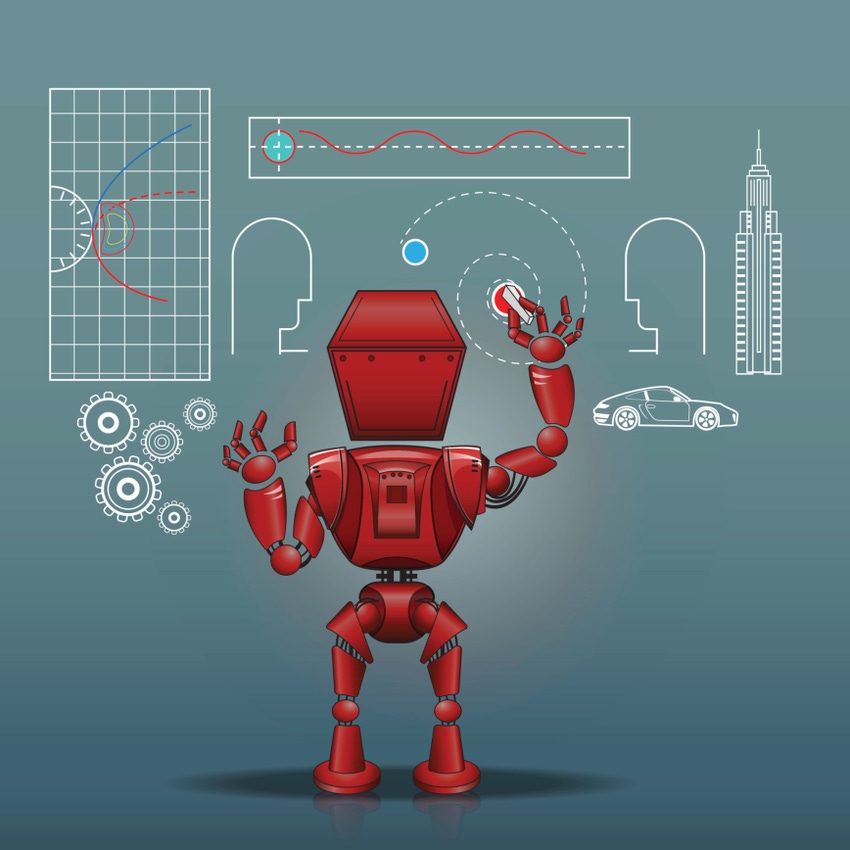Thanks to advances in robotics and artificial intelligence, there is growing concern that technology will soon cost more workers their jobs. This includes many white-collar workers, who have not been displaced by technological innovation nearly to the extent that blue-collar workers have.
March 2, 2016

Well, there’s good news and bad news on the job front.
First the good: trade association and market researcher CompTIA released a new report this week that concludes that job growth in the tech sector grew at the fastest rate in more than a decade in 2015. Last year, the number of tech workers in the U.S. climbed to 6.7 million, a 3 percent bump over 2014, according to the Cyberstates 2016: The Definitive State-by-State Analysis of the U.S. Tech Industry report. (For more on the report, see Kris Blackmon’s report on The VAR Guy.)
Between 2014 and 2015, nearly 200,000 tech jobs were added to the industry. Half of them, the report found, were added in the IT services sector.
The sheer number of workers employed in tech represents a good proxy as to the overall health of the sector, says CompTIA’s Tim Herbert, senor vice president of research and analysis.
Now for the (potential) bad news: thanks to advances in robotics and artificial intelligence, there is growing concern that technology will soon cost more workers their jobs. This includes many white-collar workers, who, since the dawn of the industrial revolution, have not been displaced by technological innovation nearly to the extent that blue-collar workers have.
Could this soon change? Recent developments suggest it might. Consider these observations:
In The Digital Revolution, which was just published by Pearson Press, former Cisco SVP Inder Sidhu highlights the epiphany Jeopardy champ Ken Jennings had after unceremoniously losing a game of wits to IBM’s cognitive computer. (Okay, true confession, I was the ghost writer on this book so yes this is an obvious, shameless plug.)
Though Jennings had high hopes for the outcome, he was left speechless—literally—by the IBM machine, which never let Jennings get a word in edgewise. Afterwards, Jennings recognized the pivotal shift advances in artificial intelligence represent to white-collar workers. “What happens to society when hundreds of millions of people have that aimless, rudderless feeling of ‘I’ve been replaced by a very small box?’” he wonders in a Sundance documentary film from 2015.
From super-smart computers, lets shift to nimble robots. Last week, researchers at Boston Dynamics made headlines with a new video that showed off their latest Atlas robot, which can stock shelves and traipse across a snow covered forest floor. Now you’re probably saying that stocking shelves isn’t exactly “brain surgery.” But remember: there are robots being outfitted to do just this. Last year, John Markoff of The New York Times wrote a story about “A Robot That Can Perform Brain Surgery on a Fruit Fly.”
In another indication of how far computers and artificial intelligence have come, consider this week’s story of the Google driverless car that caused an accident. This isn’t the first time that Google driverless car has been in an accident. Instead it’s the first time that a Google car was partially to blame. That’s what made headlines. It is also what makes thought leaders believe that we are inching ever closer to a time when driverless cars will be as common as battery-powered ones.
The advent of driverless cars still leaves unanswered what impact technology will have on jobs that require more critical and creative thinking. This week, The White House released its annual “Economic Report of the President.” In the report, the government addressed this very question. It concluded the following:
While industrial robots have the potential to drive productivity growth in the United States, it is less clear how this growth will affect workers. One view is that robots will take substantial numbers of jobs away from humans, leaving them technologically unemployed—either in blissful leisure or, in many popular accounts, suffering from the lack of a job. Most economists consider either scenario unlikely because several centuries of innovation have shown that, even as machines have been able to increasingly do tasks humans used to do, this leads humans to have higher incomes, consume more, and creates jobs for almost everyone who wants them. In other words, as workers have historically been displaced by technological innovations, they have moved into new jobs, often requiring more complex tasks or greater levels of independent judgment.
The good news therein is tempered by the realization that the rate of displacement is happening faster than ever. Consider: it took decades for saddle makers and carriage builders to adjust to the disruptive rise of the automobile. In contrast, travel agents had less than five years to rechart their careers after Expedia, Orbitz and other travel sites took hold. Financial planners? Mammography technicians? Once the software programmers get their algorithms right, these and many other jobs could disappear or change very in the relative blink of an eye.
Says who? How about Amanda Kahlow, CEO at 6sense, an AI-focused marketing firm. She made headlines last month at the MIT Technology Conference when she suggested that the white, all-knowing and powerful male decision maker at the helm of many companies could lose a lot of his luster to data-driven software applications.
“A lot of business is run by, no offense, smart white men,” said Kahlow. “AI is going to take the ego out of the equation.”
If you’re really thrown by this suggestion, the consider a new summary written by Daniel Faggella, founder of TechEmergence.com. In a blog entitled, “Artificial Intelligence Risk – 12 Researchers Weigh in on the Danger’s of Smarter Machines,” he sums the following:
The majority of the experts interviewed are concerned about the financial and economic harm that already exist but that may be exacerbated to extremes without a conscious plan to move forward, resulting in a range of risks from bigger gaps in wealth distribution to negative environmental effects, like pollution and resource exhaustion.
What do you think? Will tier one and tier two support jobs be displaced? What about sales and configuration jobs? Or, heaven forbid, higher-end consulting jobs?
“Press one for business processing reengineering…”
Is that really in our future?
Would love to know your thoughts: [email protected]
About the Author(s)
You May Also Like


